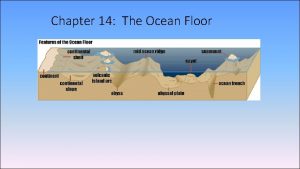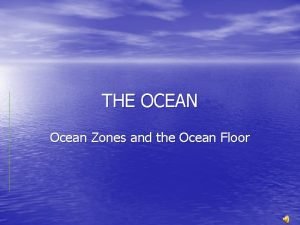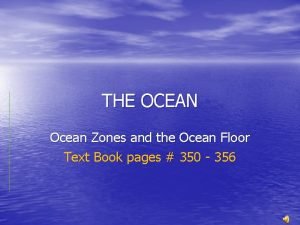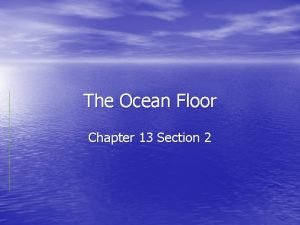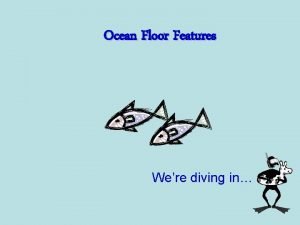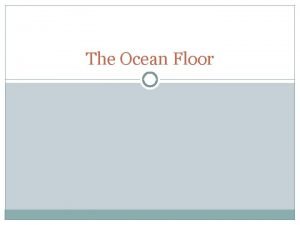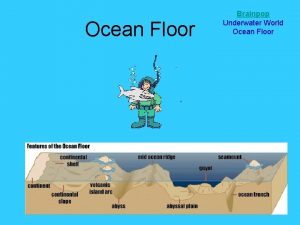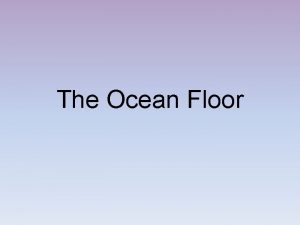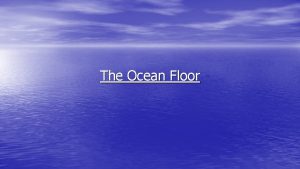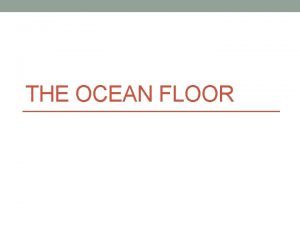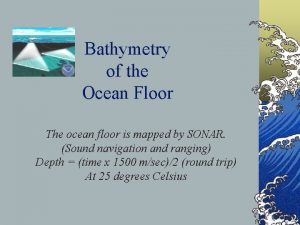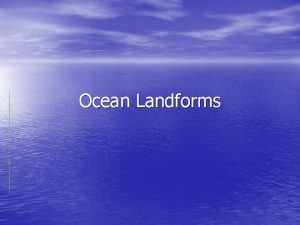Lesson 2 2 Ocean Floor Refer to Chapter











- Slides: 11

Lesson 2. 2 Ocean Floor *Refer to Chapter 3 in your Textbook

Lesson 2. 2 Learning Targets: 1. Identify & label the ocean zones. 2. Label & identify ocean floor features. 3. Describe the composition of the seafloor.

Ocean Zones: Hortizontal: Intertidal Zone: area closest to shore, covered during high tide and exposed to air during low tide Neritic Zone: extends from the intertidal zone to the continental shelf Oceanic Zone: extends from the continental shelf to the end of the continental slope

Ocean Zones: Vertical: Pelagic Zone: “open ocean” Photic: portion of the pelagic zone with sunlight Aphotic: portion of the pelagic zone without sunlight Benthic Zone: “bottom of ocean, ” ocean floor Hadal Zone: below the bottom of the ocean floor (trenches)


Ocean Floor: Bathygraphic features: are the physical features of the ocean VS Topographic features of land Ocean Floor Divided into 2 regions: 1. Continental Margin: from continental shelf to rise 2. Ocean Basin: from continental rise to open ocean

1. Continental Margin: Continental Shelf: top of margin Continental Slope: sharp drop from shelf Continental Rise: bottom of slope, gradual drop Submarine Canyon: deep cut in continental margin

2. Ocean Basin: Abyssal Plains: flat ocean bottom Seamounts: single underwater pointed mountain Guyots: single underwater flat mountain Trenches: deep cut in the ocean floor Ridges: a continuous series of underwater mountains

2. Ocean Basin:

Composition of the Ocean Floor: Basalt rock covered by a layer of sediment Types of Sediment: Hydrogenous: forms from chemical processes in the seawater Biogenous: forms from the shells & skeletons of living organisms Terrigenous: carried into the ocean from the land Cosmogenous: particles from outer space

 Chapter 15 ocean water and ocean life answer key
Chapter 15 ocean water and ocean life answer key Chapter 14 the ocean floor worksheet answers
Chapter 14 the ocean floor worksheet answers Types of divergent plate boundary
Types of divergent plate boundary Ocean ocean convergent boundary
Ocean ocean convergent boundary Convergent plate boundaries
Convergent plate boundaries Ocean ocean convergent boundary
Ocean ocean convergent boundary Seafloor spreading demonstration
Seafloor spreading demonstration Ocean to ocean convergent boundary
Ocean to ocean convergent boundary Blue og red ocean
Blue og red ocean Slidetodoc.com
Slidetodoc.com The deep ocean floor that is nearly flat
The deep ocean floor that is nearly flat Deep valley on the ocean floor
Deep valley on the ocean floor

